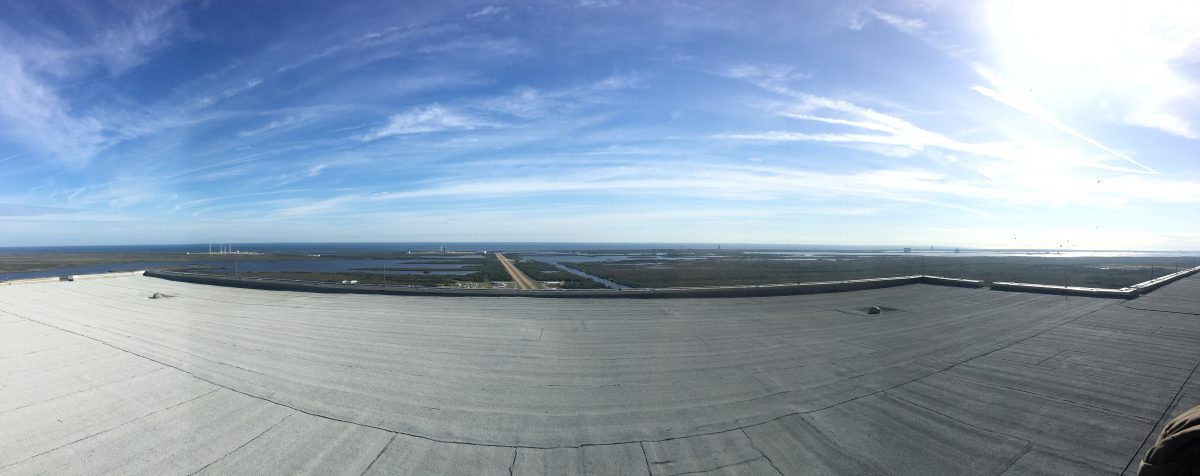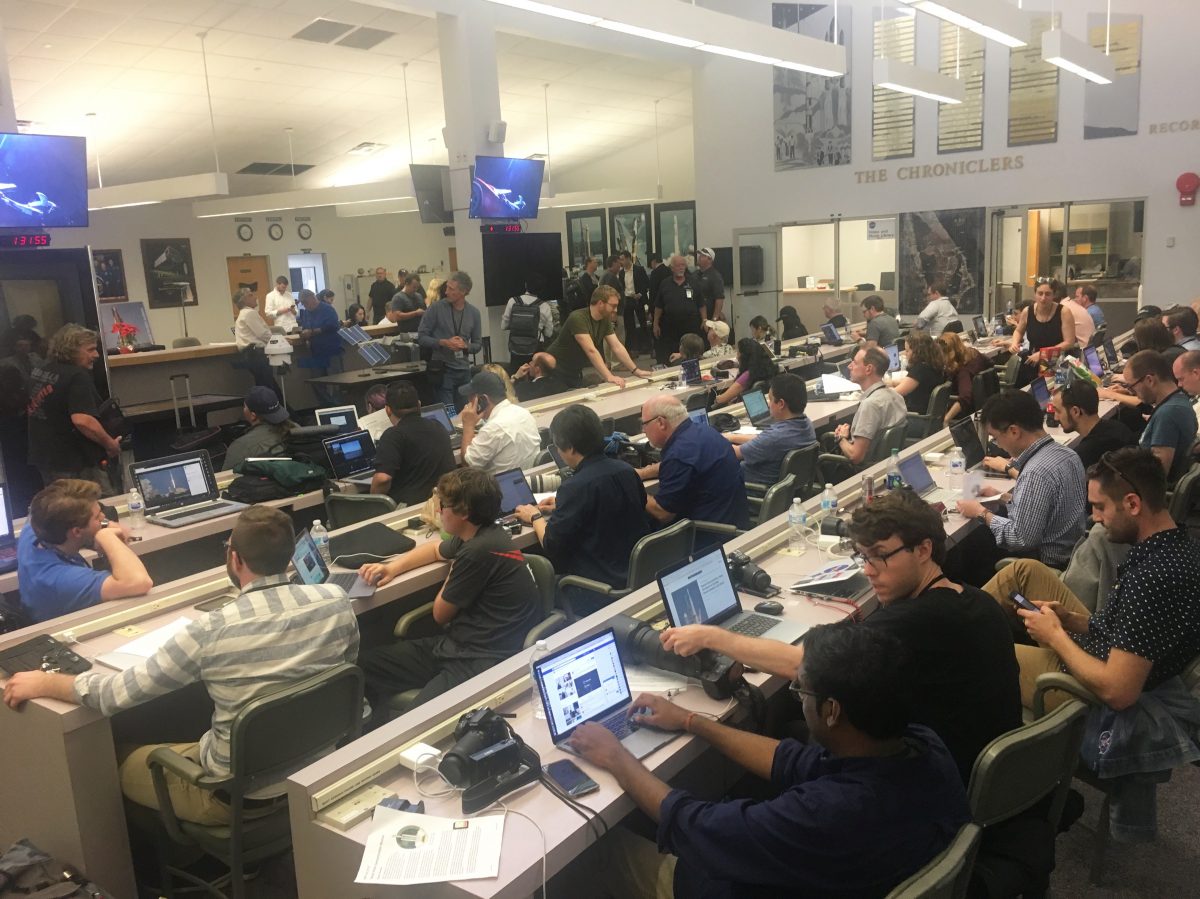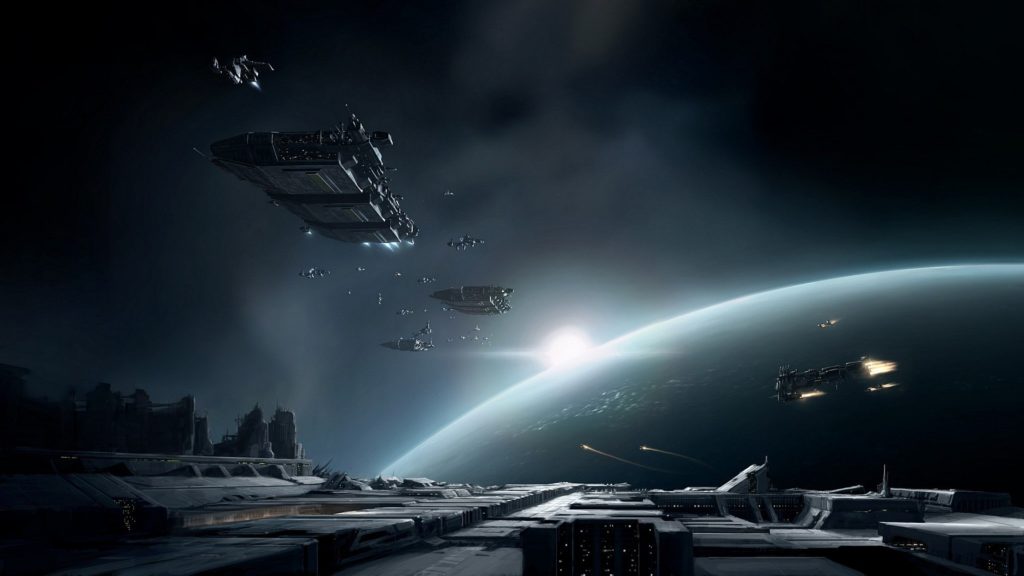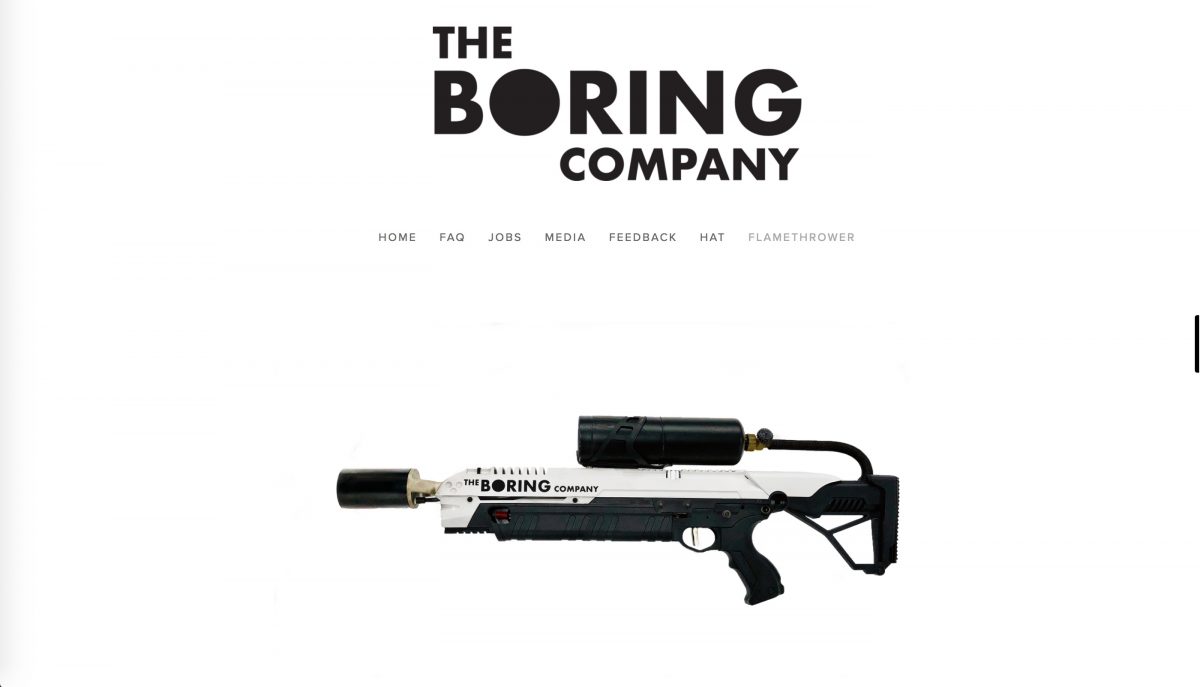Do you have trouble explaining or defending your chosen career to family & friends? Is your sole source of entertainment a never-ending loop of Star Trek: Voyager episodes? Do you like to work constantly but make no real money? Then space journalism is for you.
There aren’t many people out there regularly reporting on space exploration but as the commercial industry (SpaceX) launches more rockets and debut new spacecraft, more media companies will invest in space coverage. Last week’s Falcon Heavy launch brought nearly 400 reporters, photographers, bloggers, tv anchors, and podcasters from around the world to Florida’s space coast and the area hasn’t seen this much activity since the Shuttle era.
The hype was real for this launch and for many of us who work the spaceport beat, it was our Superbowl. Those who follow Elon Musk on twitter know that I covered the Falcon Heavy’s only test-firing a couple of weeks before liftoff. There was less than a handful of us, and the delays were starting to take a toll. Three hours of driving every day it was delayed, paying for access to a nearby beach every time, and just having general anxiety about the report you have to file and the content you have to post on social media when it does finally happen.
Why the need to tell this story? Because SpaceX and its eccentric founder Elon Musk are having a moment. The company launched the most powerful rocket in the world last week and to add a little flair, sent a Tesla Roadster barreling into the solar system with “Starman” at the wheel––a mannequin with a questionable taste in fashion.
SpaceX launched the Falcon Heavy maiden flight from NASA’s historic Kennedy Space Center, where they made a new home last year. The company renovated launch pad 39A for Falcon Heavy and crew flights but in 2017, used it to make the reusable Falcon 9 rocket a reality.
I don’t know how many total rocket launches I’ve witnessed during my time reporting for the Observer at Cape Canaveral, but I do know that the Falcon Heavy demonstration was my 27th SpaceX mission. Since my first in January of 2015, the company went from blowing up the Falcon 9 trying to recover it on the drone ship to synchronized twin booster touchdowns after the Falcon Heavy launch. Rocket launches are heart-pumping and thoroughly exciting events but the visual of a booster soaring back toward the Earth and performing a precision touchdown blurs the line between reality and science fiction. The sonic booms are the icing on the cake.
Journalist or not, I recommend anyone take a trip to Cape Canaveral to witness one of these booster landings. If you work in media, the opportunity for good content is enormous. Those on the space beat tend to be the “Fox Mulders” of their organization, usually trapped in the proverbial basement going on and on about aliens. Falcon Heavy was a good opportunity for some of us to finally get a piece of that travel budget and when human spaceflight returns to American soil at Cape Canaveral, companies will have more incentive to dispatch a reporter to the space coast.

Reporter and Photographers setting up their cameras before a launch
If you find yourself heading down to Florida for a SpaceX launch, you’re probably already feeling burned by the last minute plane ticket. A launch date isn’t usually firm until the rocket is test-fired while being held down on the launch pad. Never book your trip to cover a mission until after this is complete because just like launches, static-firing can be delayed. SpaceX usually launches within a week of a successful test. You’ll have to fly into Orlando International which is over an hour away from the spaceport and the only way to get across central Florida is by rental car. If you’ve already gone over budget and angered both your significant other and your editor, then you’re on the right track.
Also, before you even board your flight to Florida, mentally prepare yourself for launch delays that can span either a day or a couple of weeks. Make sure you express this to your friends & family and pre-plan for at least an extra day or two from the original launch date. If it’s a high-profile mission like Falcon Heavy, join a space reporter Slack channel where people are offering support and advice. Still feeling anxious? Email the SpaceX communications team in the middle of the night for reassurance.
Picking up your credentials for a SpaceX mission is a lot like buying weed. During the Falcon Heavy demo flight, hundreds of reporters from around the world were welcomed by SpaceX at one of the nicer hotels in the area. This is not usually the case. Before a more routine mission, you’ll have to drive down a road lined with shuttered businesses and undeveloped land abandoned after the space shuttle program ended. When you arrive to what seems like the middle-of-nowhere, you’ll find what looks like a truck stop bathroom with NASA’s logo displayed on the front. It’s one of the agency’s badging stations situated down the road from Kennedy Space Center’s security gate. In the parking lot of this badging station, a SpaceX staffer will be waiting to issue you credentials out of the trunk of his rental car. And because this is all very official, make sure you have two forms of ID.
Now that SpaceX has rebuilt pad 40 at Cape Canaveral Air Force station and will launch routine missions from the site again, media will mostly be picking up credentials at the Air Force Space & Missile Museum which is located at the entrance of the base. SpaceX now has two active launch pads in Florida and it’s important to note the distinction if you are planning to cover a mission. SpaceX leases pad 39A at Kennedy Space Center from NASA and leases pad 40 at nearby Cape Canaveral Air Force Station from the military. Most upcoming high-profile missions like Falcon Heavy, Crew Dragon, and NASA cargo runs, will host media at Kennedy Space Center’s press site.
If it’s your first time at NASA’s flagship facility, the very first thing that will overwhelm you is the size of the agency’s Vehicle Assembly Building––the largest single-story building in the world. It was used to prep the massive Saturn V rocket before it lofted humans to the moon and hosted NASA’s fleet of space shuttles before their missions to assemble the International Space Station and place the Hubble telescope. Michael Bay filmed Armageddon there and just down the road at NASA’s press site, Robert Zemeckis shot his science-fiction classic, Contact. While media poured into the parking lot for the Falcon Heavy demo flight, Damien Chazelle was shooting scenes for First Man, a Neil Armstrong biopic starring Ryan Gosling.
If you find yourself at Kennedy Space Center for a NASA mission, make sure you are one of the first to sign up for launch viewing atop the 525-ft Vehicle Assembly Building. Not only is it the absolute best view of the launch, but merely travelling up through the colossal infrastructure to reach the roof, is an experience that will leave you feeling like the trip to Florida was worth it. Downside? Cell service on the rooftop is terrible. There’s also the potential for getting stuck up there in the rain during long launch windows.

The view from the roof of the Vehicle Assembly Building
Cell service in general at Kennedy Space Center is pretty poor. And if you are under the impression that NASA has state-of-the-art internet because they can beam data back from Pluto, you are very wrong. Accessing the “guest” internet at the press site is a constant headache, especially when you’re trying to upload photos and videos. Does your media company have the bright, and totally unique idea of doing a live stream during the launch? Good luck. The service gets worse in the moments before liftoff.
The only thing worse than the internet situation is the food situation. If you do not bring your own food or water to the spaceport you will be hangry just shortly after arriving. NASA does have a nearby cafeteria that is accessible to the media but it’s either too crowded for a quick stop or not open at all. You’ve got two options there: Subway’s and BBQ. Both SpaceX and NASA have catered food for the media on many occasions. Especially when there’s less than a dozen of us covering a routine satellite mission. The many reporters covering Falcon Heavy did not enjoy this luxury.
But wait, did you just fly down to Cape Canaveral for a launch and some decent catering from SpaceX? Depends. For every mission, SpaceX will bus out media for a visit to the launch pad so we can capture b-roll and setup remotely-activated cameras. The most important thing you need to remember about this pad visit is that you will be eaten alive by mosquitos. Cover every inch of your body. If you even leave your knuckles exposed, they will feast on it. I want to say that strong repellent works but I’m just not sure anymore. These are hardcore mosquitos that hang around for rocket launches so they don’t fuck around.
If you find yourself covering a cargo resupply mission to the Space Station being flown by SpaceX, you can expect a representative of the company to give a statement and take questions. For copies of all press conference videos and launch footage, there’s a really awesome girl who works in the media center at the Press Site. She will make high-quality copies for you and even ship them to your office. She also puts out really good snacks for us reporters. The press site is bustling during high-profile missions and public affairs officials are present for questions. Once, Bill Nye showed up and performed what seemed like a live version of his old television show and accidentally revealed that SpaceX would use recycled boosters on the first Falcon Heavy flight.
The Obama-era NASA Press Site had a more international vibe. Mainly because flags from nations represented at the International Space Station hung prominently from the ceiling.They were brought down for cleaning in late 2016 and put back up. Then after Trump’s inauguration, the flags were removed and never seen again. On the floor, you’ll find a half-assed model of the space station and a model of the Orion spacecraft, which I knocked over once in front of a room full of journalists and engineers.
NASA has also installed a nifty interactive touchscreen tabletop for exploring what NASA is now selling as a multi-user spaceport. The agency also mounted ultra high-definition screens for launch and press conference viewing. The sound system echoes throughout the immediate area so I pulled into the parking lot one day to Pope Francis giving remarks over the loudspeaker––which was actually a televised event being broadcast on NASA TV. You know what would be nice though? A coffee machine.
When you enter the main Press Site building, you’ll be greeted by the portraits of President Trump and Vice President Pence. The Vice President visited once and long story short, he touched a thing he wasn’t supposed to touch and said America was no longer leading in space. Since that’s really depressing, here are some notable people that have also visited Kennedy Space Center during my time in the press pool: Chiwetel Ejiofor, Taraji P. Henson, Octavia Spencer, Janelle Monáe, Pharrell, and Mackenzie Davis. And this should be obvious, but you’ll run into both current and retired astronauts pretty regularly.
Now, to the question your editor will ask while your begging for a plane ticket to Florida: Will Elon Musk be there? Will he do a press conference? If it’s a milestone mission for SpaceX then yes. Musk has graced the media with his presence on a few occasions over the past few years. After landing a booster on the droneship for the first time, the first flight of a recycled Falcon 9 booster, and most recently, after the Falcon Heavy maiden flight.
That’s what is great about covering SpaceX: Each launch means something. Each time a booster is recovered by land or sea, and each time one of those are reflown, it informs on the company’s ultimate vision of cost-effective access to space. Why wait for NASA or other commercial companies to draw you a roadmap to Mars, when SpaceX is clearly paving one right in front of us?
While the Falcon Heavy launch was an extraordinary day for SpaceX and something many of the reporters who witnessed it will ever forget, one thing that stood out to me most was how exhausted Elon Musk looked during the post-launch press conference. It’s a good sign that not only is SpaceX working hard toward its Mars ambitions, but will also keep us space reporters employed for a while and will keep those precious retweets coming.

Inside Kennedy Space Center’s Press Site during the Falcon Heavy Demo Launch









